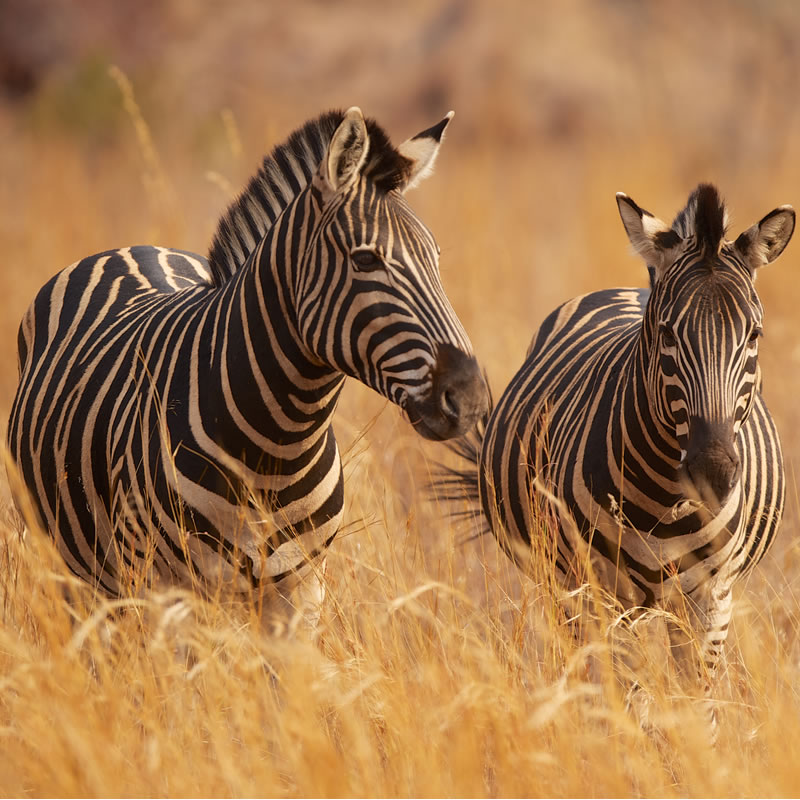
Scientific Name
Equus quagga
Classification
| Kingdom | Animalia |
| Phylum | Chordata |
| Class | Mammalia |
| Order | Perissodactyla |
| Family | Equidae |
| Genus | Equus |
| Species | quagga |
IUCN Redlist Status

Location
Plains zebras are located in southern and eastern African countries such as Namibia, Zambia, Kenya, Tanzania and Mozambique.
Habitat
In these countries, they live in savannas, open woodland and forest areas.
Diet
Their diets consist of a variety of long and short grasses. They will also eat leaves and other vegetation at times.
Size
Adult plains zebras stand between 4 - 4.75 feet at the shoulder and their average weight is between 450 - 600 lbs.
Description
The stripes of zebras differ between species. The stripes of plains zebra typically form a Y shape in the midsection or saddle of the zebra. Between the dark, solid stripes are shadow stripes. Their manes begin on their forehead between eye level and the ears, and run to the end of the neck. The eyes of zebras are on the sides of the head to assist them in seeing predators in multiple directions.
Reproduction
The gestation period of female plains zebras lasts approximately one year; after birth the foal will nurse for another year. A female zebra, or mare, will most often give birth to only one infant at a time.
Adaptations
The most noticeable adaptation of plains zebras is its stripes. Their stripes may help to visually confuse its predators, mainly lions. There are other theories of why zebras have stripes; one being that the stripes may help regulate the body temperature of the zebra.
Special Facts
Plains zebras face several threats including predators, poaching and habitat loss due to human activity. Watering holes and rivers are especially dangerous for them, due to the threat of lions, hyenas, crocodiles and other predators.
There are three total species of zebra. The other two are Grévy's and Mountain.
